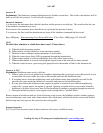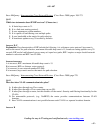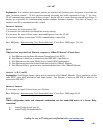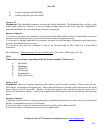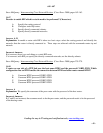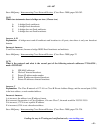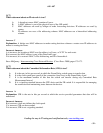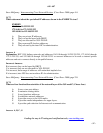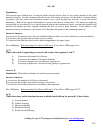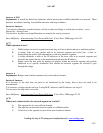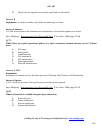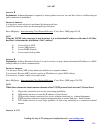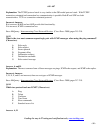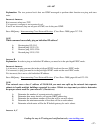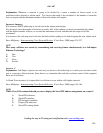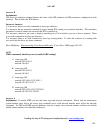
640 - 607
Leading the way in IT testing and certification tools, www.testking.com
- 52 -
Explanation:
The network layer defined how to transport traffic between devices that are not locally attached in the same
broadcast domain. For the communication the device will require two pieces of information: a logical address
associated with the source and destination stations and a path through the network to reach the desired
destination. Both of the required information is stored in the devices routing table. The addresses within the
routing table are considered to be a logical network address that contains two parts: one part that identifies the
network and another part that uniquely identifies the host on each of those networks. If the address of the
destination device is unknown to the device it will broadcast the packet to the remaining interfaces.
Incorrect Answers:
D is incorrect; the network layer does not establish addresses rather it uses the addresses to route information.
E is incorrect; the physical layer provides access to media.
F is incorrect; the data link layer provides media independence for upper layers.
Steve McQuerry. Interconnecting Cisco Network Devices. (Cisco Press: 2000) pages 24-6.
Q. 75
What is the result of segmenting a network with a router into segments 1 and 2?
A. It increases the number of collisions.
B. It decreases the number of broadcast domains.
C. It connects segment one’s broadcast to segment two.
D. It prevents segment one’s broadcast from getting to segment two.
Answer: D
Explanation: The broadcast domains are broken up and separated.
Incorrect Answers:
A is incorrect; the number of collisions is decreased.
B is incorrect; the number of broadcast domains is increased.
C is incorrect; the broadcast domains are broken up and separated.
Steve McQuerry. Interconnecting Cisco Network Devices. (Cisco Press: 2000) pages 26-27.
Q. 76
Which three basic switch functions increase available bandwidth on the network? (Choose three)
A. Loop avoidance.
B. Address learning
C. Hop count limiting
D. Broadcast filtering
E. Packet forward/filtering.



